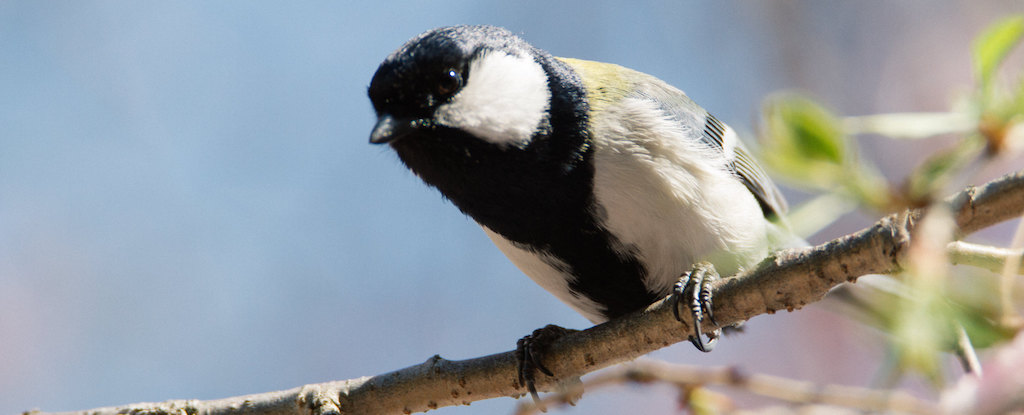Birds are famous for communicating vocally, but many have other options, too. Some communicate by dancing, for example, or by showing off their feathers.
And according to a new study, at least one bird species does something more often associated with humans and great apes: symbolic gesturing.
A songbird called the Japanese tit (Parus minor) uses fluttering wing movements to signal “after you,” the study’s authors report, similar to the way humans extend one open hand to let another person go first.
Among Japanese tits, the gesture seems to occur only between mating pairs, when the male or female gestures for the other to enter their nest box first.
The observation challenges conventional wisdom about symbolic gestural communication, which was thought to be prominent only among our species and great apes, the researchers say.
The Japanese tit also made news in 2016, when researcher Toshitaka Suzuki – now at the University of Tokyo – and colleagues reported evidence of compositional syntax in its calls. This ability to combine units of communication into phrases was the first example found in any wild animal species.
The complexity of the birds’ vocal communications inspired the researchers to study other ways they might communicate, says Suzuki, who authored the new study along with University of Tokyo colleague Norimasa Sugita.
“For over 17 years, I have been engaged in the study of these fascinating birds,” Suzuki says. “They not only use specific calls to convey particular meanings, but also combine different calls into phrases using syntactic rules.
“These diverse vocalizations led me to initiate this research into their potential use of physical gestures,” he adds.
We once believed humans alone used gestural communication, until research on great apes like chimpanzees and bonobos showed they share this capacity with us.
More recent studies have also revealed how certain birds and fish use simple body movements for purposes like pointing out an object of interest, known as deictic gesturing, the researchers note.
Symbolic gestures, however, are a different story. They require more sophisticated cognitive abilities, and there is little conclusive evidence any nonhuman animal uses them without human instruction.
In the new study, Suzuki and Sugita observed eight pairs of Japanese tits, including 16 individual parents, that were breeding in nest boxes.
The birds periodically bring food back to the nest to feed their chicks, first perching on a nearby branch. They need to enter their nest one at a time due to the size of the opening, similar to two humans trying to pass through a door.
The researchers analyzed more than 320 nest visits by Japanese tit parents, noticing a consistent pattern in which one parent fluttered its wings on the perch before the other parent entered the nest. The parent who fluttered its wings would then enter second.
“We were surprised to find that the results were much clearer than we had expected,” Suzuki says. “We observed that Japanese tits flutter their wings exclusively in the presence of their mate, and upon witnessing this behavior, the mate almost always entered the nest box first.”
Female birds performed the gesture more often than males, the study found, prompting the males to enter the nest, regardless of who had arrived first.
In nest arrivals when the female didn’t flutter her wings to the male, she usually entered the nest box first.
This counts as symbolic gesturing for several reasons, the researchers contend: The wing-fluttering behavior only happened in the presence of a mate; it stopped when the mate entered the nest; and it encouraged the mate to enter first with no physical contact.
The fluttering was also directed at the bird’s mate rather than at the nest itself, the authors note, distinguishing it from a simpler deictic gesture like pointing.
“There is a hypothesis that walking on two legs allowed humans to maintain an upright posture, freeing up their hands for greater mobility, which in turn contributed to the evolution of gestures,” Suzuki says. “Similarly, when birds perch on branches, their wings become free, which we think may facilitate the development of gestural communication.”
This ongoing research sheds light not just on how birds communicate, Suzuki adds, but how language originates in general.
”We will continue to decipher what birds are talking about through gestures, vocalizations and their combinations,” he says. “This endeavor not only enables us to uncover the rich world of animal languages, but also serves as a crucial key to unraveling the origins and evolution of our own language.”
The study was published in Current Biology.





